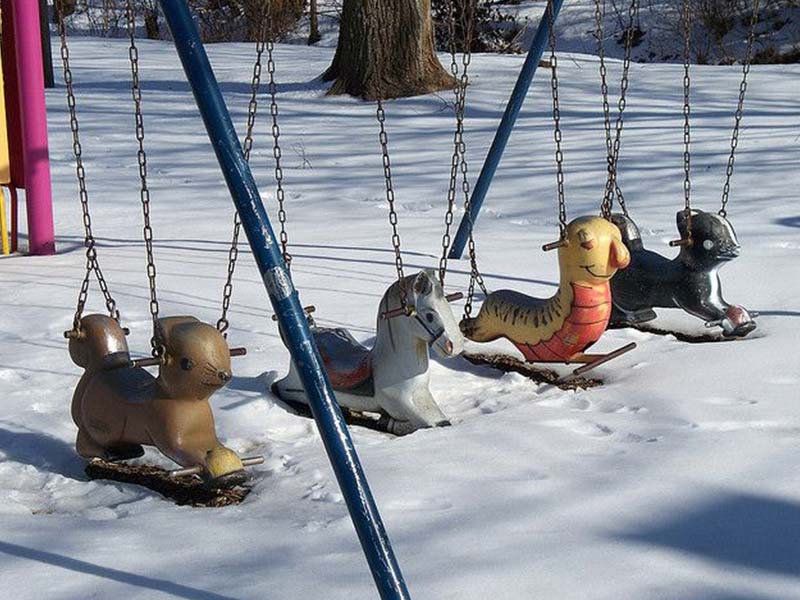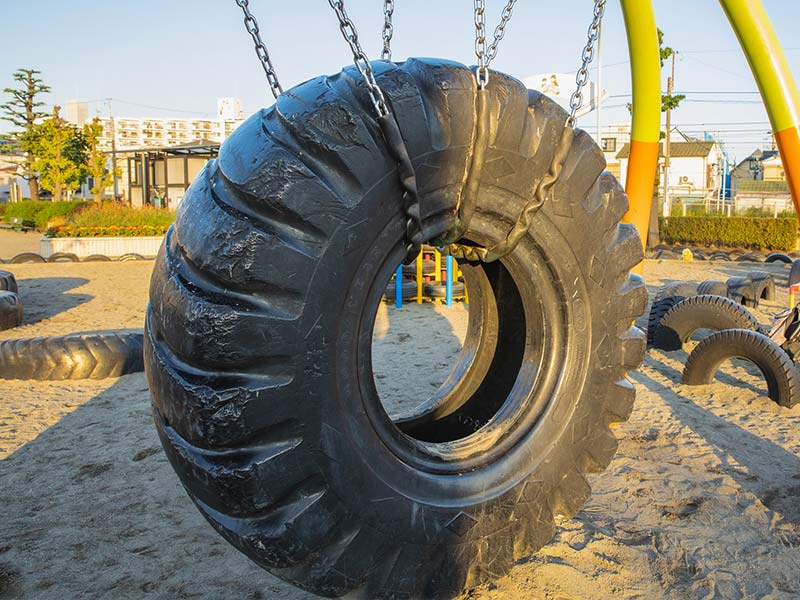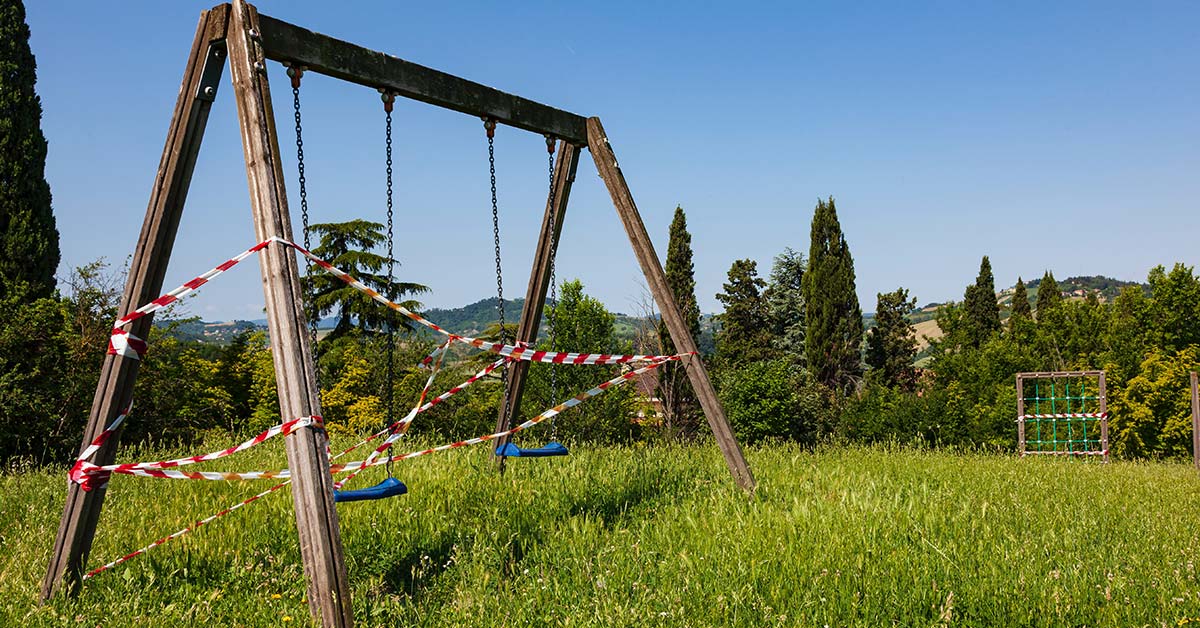There’s no doubt that playground equipment has changed a lot since many of us were children. Safety focus, environmental concerns, and rapid advances in technology have helped create playgrounds that are better than ever. Playgrounds also have extraordinary longevity, with equipment frequently outlasting its safety rating.
Our designers and playground installation crews are constantly working to incorporate our customers’ existing equipment into new playground installations. After all, the most budget-friendly option is to always reuse what you can. We even transport donated playgrounds to smaller venues that can still use them. Unfortunately, sometimes well-loved equipment just isn’t up to today’s standards.
That’s one of the many reasons that each member of our installation team is a Certified Playground Safety Inspector. They frequently identify and remove equipment that’s still in good shape but no longer considered safe. This is one of their lists of playground equipment that just has to go.
Banned Playground Equipment List:
Wood Playground Equipment
In 2003, the Consumer Product Safety Commission (CPSC) advised manufacturers to discontinue the use of wood equipment treated with Chromated copper arsenate (CCA). This compound has been is use for decades to prevent insect and fungi infestation on playground equipment. Unfortunately, CCA contains arsenic, which is toxic to humans and leaches into the ground.
There is some evidence to suggest that yearly resealing may reduce arsenic migration from the equipment. However, the CPSC recommends removing and properly disposing of this equipment. Odds are if your equipment isn’t made of redwood or cedar and was manufactured before 2003, it contains CCA.
Animal Swings

Animal swings are large swings with shapes like lions, tigers, and bears (oh my). These are typically plastic molds and have a fun aesthetic. Unfortunately, since 1995, the CPSC recommends removing all animal swings from playgrounds. They are heavier than standard swings and cause serious injury when a child is struck by an occupied animal. Nevertheless, their durability and appeal means that we still occasionally see these lingering on public playgrounds.
Trapeze Bars
Trapeze bars are fairly common on private playgrounds. They typically consist of a single bar positioned between two hanging chains. Allowing children to swing back and forth, dangle upside down, and spin, trapeze bars are a liability for a public playground. Children can’t see what they’re doing or where they’re going when using this type of playground equipment. Due to their mobile nature, trapeze bars are extremely easy to fall off of (typically head first). Ground or playground-fixed turning bars are a safe and fun substitute.
Gym Rings
Similar to trapeze bars but less common, we don’t recommend this simple piece of playground equipment. Gym rings are actually serious athletic equipment for use under the guidance and supervision of a professional coach. In addition to being easy to fall from or pulled from during rough play, most children lack the upper body strength to properly use gym rings with other playground equipment. Additionally, the long chains are an entanglement hazard.
Tire Swings with Real Tires

Our playground equipment experts advise against using real tire swings. Over all, manufacturers are turning away from rubber tire swings altogether. Aside from being dirty (rubber tires attract and hold onto dirt), water that gathers inside the tire can create a breeding ground for insects, mold, and mildew. To avoid this, users frequently slice drainage holes into the bottom. As a result, this compromises the strength of the swing over time. Additionally, rubber swings are heavier than their plastic counterparts. The weight of a few children added on can injure a child crossing into a swing’s path.
Why Ban Playground Equipment?
Regulations on playground equipment change for a variety of reasons. Earlier equipment was installed based on inspired designs that were not safety tested. On the rare occasion that equipment poses a serious threat to safety, a standard recall would be issued. Today’s equipment is rigorously tested and monitored by the Consumer Product Safety Commission. They perform ongoing research to continually improve safety guidelines and regulations of playground equipment.
